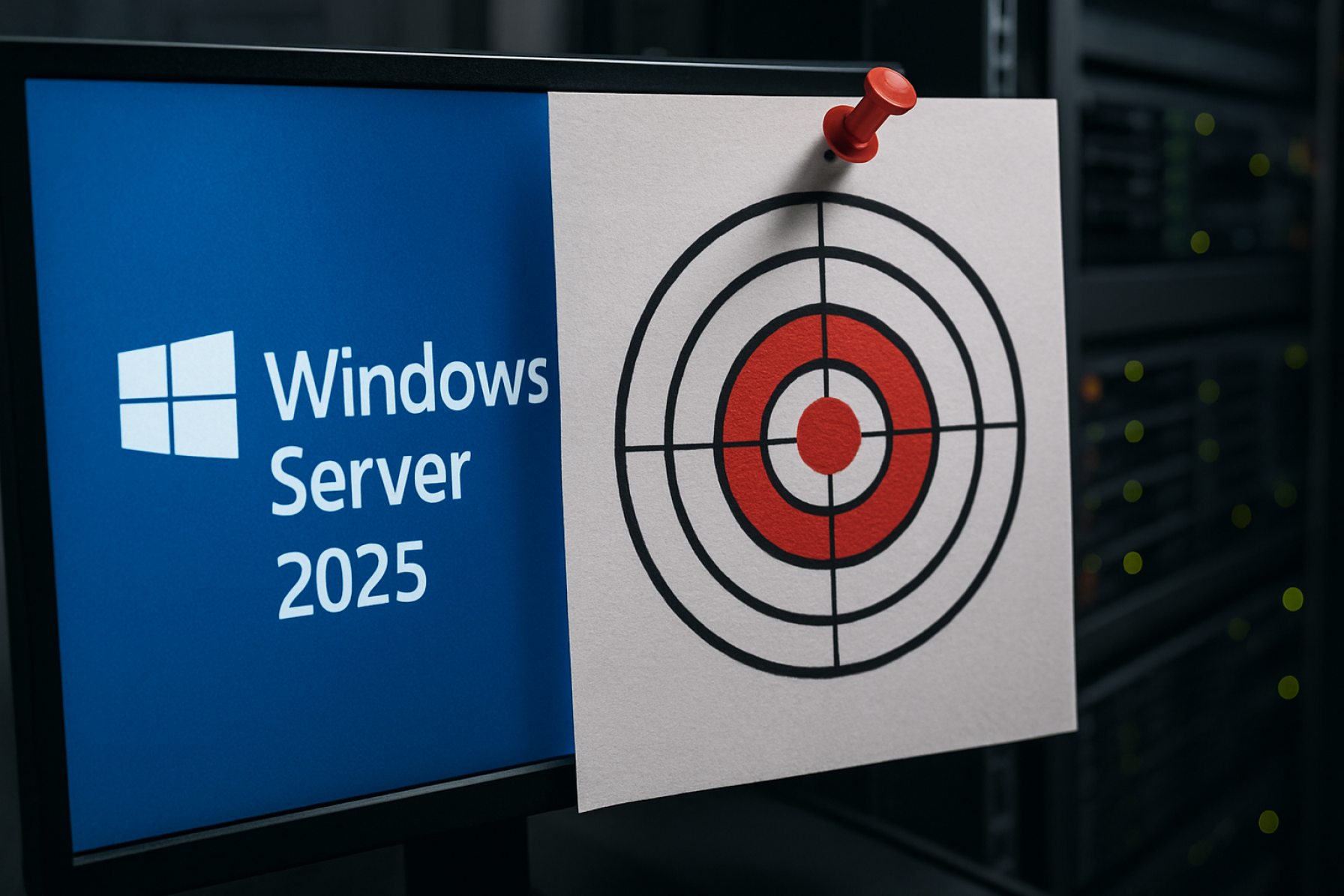- Windows Server 2025 introduces a critical flaw in delegated Managed Service Accounts (dMSA), exposing entire domains to possible takeover.
- Attackers can exploit default CreateChild permissions and manipulate the msDS-ManagedAccountPrecededByLink attribute in Active Directory to escalate privileges unnoticed.
- Automated hacking tools streamline the process, allowing adversaries to impersonate Domain Admins and perform credential theft, sabotage, or long-term data extraction.
- Defensive measures include sharply limiting CreateChild permissions, securing sensitive AD attributes, and deploying Microsoft Credential Guard.
- No official patch is available yet, so proactive auditing and tightening of access controls are crucial to prevent devastating breaches.
- The security of an entire Windows network may hinge on a single misconfigured setting—continuous monitoring and restriction are essential.
The silent corridors of corporate IT infrastructures are abuzz—an unassuming feature tucked into Windows Server 2025 now carries the seeds of catastrophic breach. IT administrators once trusted around-the-clock service accounts to do their jobs automatically and invisibly. New research reveals this very trust may be the weakest link.
Within the blueprint of Microsoft’s latest server lies a critical flaw: the delegated Managed Service Account, or dMSA, was designed to streamline service automation. Yet, its convenience has opened dangerous new frontiers for attackers. Through subtle manipulation of Active Directory components—most notably the msDS-ManagedAccountPrecededByLink attribute—a skilled adversary can leverage even a modest foothold to seize control of an entire domain.
Picture a sprawling organization: thousands of users, countless devices, and a handful of accounts with the power to make crucial changes in Active Directory. Now imagine an attacker, equipped with nothing more than CreateChild permissions—permissions often granted by default or as a matter of routine IT operation. With surgical precision, they create a new dMSA object, forging its identity so that it appears to inherit the status of a privileged target. This is not theoretical; this is an exploit chain that plays out in moments.
The exploit pivots on manipulating Kerberos—the authentication engine at the heart of most Windows networks. With automated tools like SharpSuccessor and Rubeus, adversaries maneuver seamlessly from creating rogue service accounts to impersonating domain administrators. By forging the right attributes, they trick the Kerberos Key Distribution Center into issuing overpowered tickets, effectively handing over the keys to the kingdom.
Suddenly, the attacker isn’t an outsider looking in; they’re a full-fledged Domain Admin. They can harvest credentials, sabotage systems, or remain hidden for months, siphoning off sensitive data. For those familiar with the jargon, this is “passing the ticket”—escalating privilege and walking the digital halls with impunity.
Defense demands vigilance, strategy, and action:
- Scrutinize your OU (Organizational Unit) permissions. Limit CreateChild rights with surgical precision—if you don’t absolutely need an account to create new objects, revoke its access.
- Shut down unneeded write access to sensitive attributes like msDS-ManagedAccountPrecededByLink. Make sure only true administrators can modify these settings.
- Deploy Credential Guard across your machines. This native Windows protection ensures dMSA sessions can’t be lifted and reused elsewhere.
Microsoft is aware of the issue and is working behind the scenes, but a formal patch is not yet available. Now, enterprises are forced to act—with thousands of domains potentially exposed. This is a lesson in the high cost of default trust and the peril of overlooked permissions.
The key message could not be clearer: A single, misconfigured setting may be all that stands between a secure environment and total domain compromise. Audit, restrict, monitor—do it now, before your domain’s security becomes the next cautionary tale.
Learn more about best cybersecurity practices and the latest in IT security news at Microsoft and CISA.
The quietest threat is the one already inside. Don’t let trust become your undoing.
Windows Server 2025 dMSA Vulnerability: The Hidden Cyber Threat Lurking in Your Network
Introduction
The unveiling of a major vulnerability in Windows Server 2025—centered around delegated Managed Service Accounts (dMSAs)—has sent shockwaves through cybersecurity circles. While the original article highlights how attackers can abuse the msDS-ManagedAccountPrecededByLink attribute to usurp domain control, there are additional concerns, real-world impacts, and practical steps that IT teams must understand immediately. Let’s break down the full risk, examine broader consequences, review preventive measures, and answer your most urgent questions.
What Are dMSAs and Why Do They Matter?
Managed Service Accounts (MSAs) and their successor, Group Managed Service Accounts (gMSAs), are Microsoft technologies designed to automate service identity management. dMSAs take this convenience further, simplifying password rotations and permissions for background services in enterprise environments. However, with ease comes new security implications:
– Feature Highlight: dMSAs minimize password management but may inadvertently broaden the attack surface if not tightly controlled.
– Compatibility: Supported starting with Windows Server 2025, but older approaches to MSAs/gMSAs remain in wide use.
Deep Dive: How Attackers Exploit the dMSA Design Flaw
Exploit Mechanics
– Active Directory Manipulation: The vulnerability centers on attackers with CreateChild permissions in Organizational Units (OUs). These are often granted excessively or by default—a major oversight (see [Microsoft](https://www.microsoft.com)).
– msDS-ManagedAccountPrecededByLink Attribute: By editing this key attribute, a rogue dMSA can inherit elevated privileges from privileged accounts, making privilege escalation trivial.
– Kerberos Abuse: Automated tools like SharpSuccessor and Rubeus speed up the process, forging authentication tickets and bypassing standard security checks (source: [CISA](https://www.cisa.gov)).
– Pass-the-Ticket Attacks: Once elevated, attackers can “pass the ticket” to obtain Domain Admin control, resulting in lateral movement and persistent compromise.
Pressing Reader Questions: Expert Answers
How Dangerous Is This Vulnerability?
– Highly Severe: A single misconfigured permission or attribute could compromise the entire Active Directory domain, affecting thousands or even tens of thousands of users.
– No Patch Yet: Although Microsoft is aware, as of June 2024, there is no formal security patch.
Who Is Most At Risk?
– Large Enterprises: Especially those with sprawling AD structures and decentralized IT teams.
– Organizations with Default or Legacy Permissions: Many OUs grant CreateChild by default; such legacy settings multiply risk.
What Do Security Auditors and the Community Say?
– According to Mandiant and CrowdStrike researchers, service/flexible account misuse is a top privilege escalation vector. MITRE ATT&CK framework reflects similar attack chains as “T1136: Create Account” and “T1098: Account Manipulation”.
Can Small Businesses Be Targeted Too?
– Yes: While big corporations face bigger-scale threats, any business running Active Directory is potentially affected if default permissions aren’t reviewed.
Features, Specs & Pricing: Managed Service Accounts in Windows Server 2025
– Specs: Designed for non-human AD objects; automates key management.
– Pricing: No additional licensing cost—part of standard Windows Server 2025 deployments.
– Integration: Compatible with most enterprise workloads; major improvements over legacy service accounts.
Pros & Cons Overview
Pros:
– Easier service account management
– Automated password rotation and protection
– Reduced burden for manual security
Cons:
– Broad permissions may lead to catastrophic exploit scenarios if not monitored
– Not all third-party apps support new dMSA features
– The current vulnerability highlights real-world risk
How-To Steps: Immediate Mitigation & Life Hacks
1. Audit Permissions
– Run: PowerShell scripts (`Get-ADPermission`, `dsacls`) to enumerate who has CreateChild rights in OUs.
– Life Hack: Use built-in Group Policy Objects to automate routine permission audits every month.
2. Restrict Attribute Access
– How-To: Limit write access to msDS-ManagedAccountPrecededByLink and other sensitive attributes only to Domain Admins.
– Tip: Review access delegations across all service/admin accounts.
3. Enable Credential Guard
– Instructions: Deploy via Group Policy or Microsoft Defender for Endpoint.
– Why: Prevents attackers from harvesting cached Kerberos tickets from system memory.
4. Monitor & Detect
– Best Practice: Set up SIEM rules for dMSA object creation and modification events.
– Tool Suggestion: Use “Advanced Security Audit Policy” settings in Windows for granular tracking.
5. Communication & Training
– Quick Tip: Educate IT staff about the risk and best practices for service account management.
Real-World Use Cases & Industry Trends
– Zero Trust Adoption: Organizations are transitioning to zero trust models, minimizing default permissions—this vulnerability underlines why.
– Incident Response Evolution: Major breaches in 2023-24, such as the Lapsus$ and Hafnium attacks, often traced privilege escalation to mismanaged AD accounts.
– Vendor Competition: Alternatives to Microsoft AD (Okta, JumpCloud) are gaining ground thanks to modern, cloud-centric security models.
Controversies & Limitations
– Controversy: Critics argue Microsoft prioritizes administrative convenience over security, pointing to repeated AD-related vulnerabilities.
– Limitation: No easy way exists for massive, automated corrective changes—manual audits are slow and labor-intensive.
Security & Sustainability Insights
– Security: Continuous auditing is resource-intensive but crucial.
– Sustainability: Tighter controls today mean less recovery and downtime tomorrow—a sound cybersecurity investment.
Insights & Predictions
– Immediate threat: Attackers are already weaponizing automated tools for this exploit.
– Long-term: Organizations who adopt “least privilege” principles and automate permission reviews are far less likely to fall victim.
Actionable Recommendations & Quick Tips
1. Audit your OUs and service account permissions now—before attackers do.
2. Limit or remove CreateChild rights wherever possible, especially outside core IT groups.
3. Regularly monitor AD events for suspicious dMSA activities.
4. Apply Credential Guard and push users onto secured, patched endpoints.
5. Stay up to date at [Microsoft](https://www.microsoft.com) and [CISA](https://www.cisa.gov) for future advisories or patches.
Conclusion
The dMSA vulnerability in Windows Server 2025 is a wake-up call for all organizations using Active Directory. Default trust settings, excessive permissions, and overlooked attributes present a clear and present danger—one that is already being exploited. Will your organization be the next headline, or will you shut the door before attackers walk in? Audit, restrict, monitor—starting today.
Related Keywords: Windows Server 2025 exploits, Active Directory security, dMSA vulnerability, Kerberos attacks, privilege escalation, enterprise cybersecurity.
—
Stay ahead of evolving threats and prioritize a zero-trust approach to Active Directory to keep your digital fortress secure. For more cybersecurity updates, visit [Microsoft](https://www.microsoft.com) or [CISA](https://www.cisa.gov).













